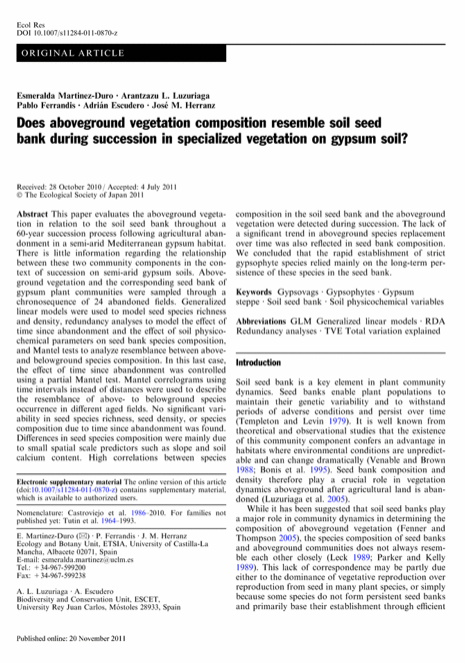Abstract
This paper evaluates the aboveground vegetation in relation to the soil seed bank throughout a 60-year succession process following agricultural abandonment in a semi-arid Mediterranean gypsum habitat. There is little information regarding the relationship between these two community components in the context of succession on semi-arid gypsum soils. Aboveground vegetation and the corresponding seed bank of gypsum plant communities were sampled through a chronosequence of 24 abandoned fields. Generalized linear models were used to model seed species richness and density, redundancy analyses to model the effect of time since abandonment and the effect of soil physicochemical parameters on seed bank species composition, and Mantel tests to analyze resemblance between above- and belowground species composition. In this last case, the effect of time since abandonment was controlled using a partial Mantel test. Mantel correlograms using time intervals instead of distances were used to describe the resemblance of above- to belowground species occurrence in different aged fields. No significant variability in seed species richness, seed density, or species composition due to time since abandonment was found. Differences in seed species composition were mainly due to small spatial scale predictors such as slope and soil calcium content. High correlations between species composition in the soil seed bank and the aboveground vegetation were detected during succession. The lack of a significant trend in aboveground species replacement over time was also reflected in seed bank composition. We concluded that the rapid establishment of strict gypsophyte species relied mainly on the long-term persistence of these species in the seed bank.
Keywords: Gypsovags, Gypsophytes, Gypsum steppe, Soil seed bank, Soil physicochemical variables.



Leave a Reply